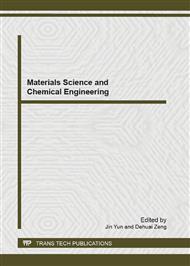p.624
p.630
p.637
p.641
p.645
p.650
p.656
p.662
p.667
Interaction between Sodium Molybdate and FSWed Wled of 5083 Effected by Time
Abstract:
Similar welds composed of 5083 were produced by friction stir welding. In the solution of 0.2 M NaHSO3 and 0.6 M NaCl, with the addition of a given concentration sodium molybdate as the inhibitor, the electrochemical corrosion behaviors of the friction stir welds (FSW) and 5083 were comparatively investigated by potentiodynamic polarization curve tests and electrochemical impedance spectra (EIS) at the ambient temperature for different test periods. The results indicated that : with the extension of period, the inhibition efficiencies (IE) for both the weld and 5083 base materials enhanced, at the same period, the inhibition efficiency (IE) for the weld was beyond that for 5083 base materials, sodium molybdate may be thought of as an effective inhibitor for 5083 aluminum alloy, the interaction between inhibitor and weld is stronger than that between inhibitor and base materials.
Info:
Periodical:
Pages:
645-649
Citation:
Online since:
May 2013
Authors:
Price:
Сopyright:
© 2013 Trans Tech Publications Ltd. All Rights Reserved
Share:
Citation:


